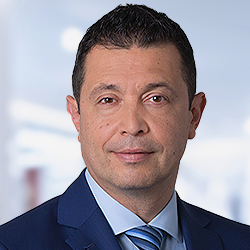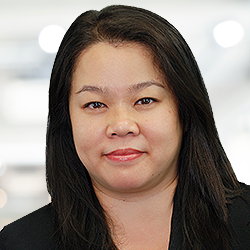Overview
Fund Tagline
A fundamentally guided, quantitative-selection driven strategy providing risk-adjusted yield
Fund Description
View important disclosureProduct Facts
| Ticker Symbol | NAWGX |
| CUSIP | 92913X811 |
| Inception Date | April 19, 1993 |
| Dividends Paid | Quarterly |
| Min. Initial Investment | $1,000.00 |
- Actively managed global equity strategy designed to deliver excess returns and high-dividend income at lower levels of volatility relative to the overall market.
- Unique approach uses fundamentally driven sector-specific models to identify the most attractive stocks within each sector.
- Stock selection is model driven.
The Fund seeks long-term capital growth and current income.
- Actively managed global equity strategy designed to deliver excess returns and high-dividend income at lower levels of volatility relative to the overall market.
- Unique approach uses fundamentally driven sector-specific models to identify the most attractive stocks within each sector.
- Stock selection is model driven.
The Fund seeks long-term capital growth and current income.
Performance
Yields
As of November 30, 2025
| SEC 30-Day Yield (Unsubsidized) SEC 30-Day Yield (Unsubsidized) A standardized yield calculation created by the SEC, it reflects the income earned during a 30-day period, after the deduction of the fund's gross expenses. Negative 30-Day SEC Yield results when accrued expenses of the past 30 days exceed the income collected during the past 30 days. | 1.87 |
| SEC 30-Day Yield (Subsidized) SEC 30-Day Yield (Subsidized) A standardized yield calculation created by the SEC, it reflects the income earned during a 30-day period, after the deduction of the fund's net expenses (net of any expense waivers or reimbursements). | 1.96 |
| Distribution Yield @ NAV Distribution Yield @ NAV Current annualized distribution rate based upon NAV is the latest dividend shown as an annualized percentage of net asset value. This yield does not include the return of principal or other non-income sources. | 2.07 |
| Distribution Yield @ MOP Distribution Yield @ MOP Current annualized distribution rate, based upon maximum offering price which is adjusted for sales changes (MOP), where applicable, is the latest dividend shown as an annualized percentage of maximum offering price. This yield does not include the return of principal or other non-income sources. | 1.95 |
Average Annual Total Returns %
As of November 30, 2025
As of September 30, 2025
| Most Recent Month End | YTD | 1 YR | 3 YR | 5 YR | 10 YR | Expense Ratios | |
|---|---|---|---|---|---|---|---|
| Gross | Net | ||||||
| Net Asset Value | +17.79 | +11.20 | +11.39 | +10.97 | +8.48 | 0.99% | 0.86% |
| With Sales Charge | +11.02 | +4.80 | +9.20 | +9.67 | +7.84 | ||
| Net Asset Value | +16.81 | +14.32 | +16.97 | +12.13 | +9.10 | 0.99% | 0.86% |
| With Sales Charge | +10.10 | +7.74 | +14.68 | +10.81 | +8.46 | ||
| MSCI World Value Index NR | +18.77 | +11.98 | +12.93 | +11.75 | +8.83 | — | — |
| MSCI World Value Index NR | +16.89 | +11.98 | +18.57 | +13.90 | +9.36 | — | — |
Inception Date - Class A: April 19, 1993
Current Maximum Sales Charge: 5.75%
The performance quoted represents past performance and does not guarantee future results. Current performance may be lower or higher than the performance information shown. The investment return and principal value of an investment in the Portfolio will fluctuate, so that your shares, when redeemed, may be worth more or less than their original cost. See above "Average Annual Total Returns %" for performance information current to the most recent month-end.
Returns for the other share classes will vary due to different charges and expenses. Performance assumes reinvestment of distributions and does not account for taxes.
Total investment return at net asset value has been calculated assuming a purchase at net asset value at the beginning of the period and a sale at net asset value at the end of the period; and assumes reinvestment of dividends, capital gain distributions and return of capital distributions/allocations, if any, in accordance with the provisions of the dividend reinvestment plan. Net asset value equals total Fund assets net of Fund expenses such as operating costs and management fees. Total investment return at net asset value is not annualized for periods less than one year.
The MSCI World Index captures large and mid cap representation across 23 Developed Markets (DM) countries. With 1,517 constituents, the index covers approximately 85% of the free float-adjusted market capitalization in each country.
The MSCI World Value Net Index captures large and mid-capitalization securities exhibiting overall value style characteristics across developed-market countries around the world. The value investment style characteristics for index construction are defined using three variables: book value to price, 12-month forward earnings to price, and dividend yield. The "Net" version of this index assumes the deduction of a withholding tax on dividend income applicable to non-resident, institutional investors who do not benefit from double taxation treaties. Returns presented for the benchmark index assumes the reinvestment of dividends after the deduction of withholding taxes, using (for international indices) a tax rate applicable to non-resident institutional investors who do not benefit from double taxation treaties.
Past performance does not guarantee future results.
Growth of a $10,000 Investment
For the period 12/31/2015 through 11/30/2025
Ending Value: $22,562.00
The performance quoted in the "Growth of a $10,000 Investment" chart represents past performance. Performance shown is without sales charges; had sales charges been deducted, performance would have been less. Ending value includes reinvestment of distributions.
Average Annual Total Returns %
As of November 30, 2025
As of September 30, 2025
| Most Recent Month End | YTD | 1 YR | 3 YR | 5 YR | 10 YR | Expense Ratios | |
|---|---|---|---|---|---|---|---|
| Gross | Net | ||||||
| Net Asset Value | +17.79 | +11.20 | +11.39 | +10.97 | +8.48 | 0.99% | 0.86% |
| With Sales Charge | +11.02 | +4.80 | +9.20 | +9.67 | +7.84 | ||
| Net Asset Value | +16.81 | +14.32 | +16.97 | +12.13 | +9.10 | 0.99% | 0.86% |
| With Sales Charge | +10.10 | +7.74 | +14.68 | +10.81 | +8.46 | ||
| MSCI World Value Index NR | +18.77 | +11.98 | +12.93 | +11.75 | +8.83 | — | — |
| MSCI World Value Index NR | +16.89 | +11.98 | +18.57 | +13.90 | +9.36 | — | — |
Inception Date - Class A: April 19, 1993
Current Maximum Sales Charge: 5.75%
The performance quoted represents past performance and does not guarantee future results. Current performance may be lower or higher than the performance information shown. The investment return and principal value of an investment in the Portfolio will fluctuate, so that your shares, when redeemed, may be worth more or less than their original cost. See above "Average Annual Total Returns %" for performance information current to the most recent month-end.
Returns for the other share classes will vary due to different charges and expenses. Performance assumes reinvestment of distributions and does not account for taxes.
Total investment return at net asset value has been calculated assuming a purchase at net asset value at the beginning of the period and a sale at net asset value at the end of the period; and assumes reinvestment of dividends, capital gain distributions and return of capital distributions/allocations, if any, in accordance with the provisions of the dividend reinvestment plan. Net asset value equals total Fund assets net of Fund expenses such as operating costs and management fees. Total investment return at net asset value is not annualized for periods less than one year.
The MSCI World Index captures large and mid cap representation across 23 Developed Markets (DM) countries. With 1,517 constituents, the index covers approximately 85% of the free float-adjusted market capitalization in each country.
The MSCI World Value Net Index captures large and mid-capitalization securities exhibiting overall value style characteristics across developed-market countries around the world. The value investment style characteristics for index construction are defined using three variables: book value to price, 12-month forward earnings to price, and dividend yield. The "Net" version of this index assumes the deduction of a withholding tax on dividend income applicable to non-resident, institutional investors who do not benefit from double taxation treaties. Returns presented for the benchmark index assumes the reinvestment of dividends after the deduction of withholding taxes, using (for international indices) a tax rate applicable to non-resident institutional investors who do not benefit from double taxation treaties.
Past performance does not guarantee future results.
Growth of a $10,000 Investment
For the period 12/31/2015 through 11/30/2025
Ending Value: $22,562.00
The performance quoted in the "Growth of a $10,000 Investment" chart represents past performance. Performance shown is without sales charges; had sales charges been deducted, performance would have been less. Ending value includes reinvestment of distributions.
Portfolio
Portfolio Statistics
As of November 30, 2025
| Number of Holdings Number of Holdings Number of Holdings in the investment. | 225 |
| P/E next 12 months P/E P/E (next 12 months) calculates the price of a stock divided by its earnings per share. | 16.36 |
| P/B trailing 12 months P/B Price to book ratio (trailing 12 month) calculates the ratio of a stock’s price to its book value. | 3.56 |
| Weighted Average Market Cap millions Weighted Average Market Cap Weighted Average Market Capitalization is the value of a corporation as determined by the market price of its issued and outstanding common stock. | $172,542.7 |
| EPS Growth (3-5 Year Estimate) EPS Growth (3-5 Year Estimate) The portion of a company's profit allocated to each outstanding share of common stock. EPS growth serves as an indicator of a company's profitability. | 7.95 |
| Active Share Active Share Active Share is a measure of the percentage of stock holdings in a manager's portfolio that differ from the benchmark index. | 74.34 |
| Price to Cash Flow Price to Cash Flow The ratio of a stock’s price to its cash flow per share. The price-to-cash flow ratio is an indicator of a stock’s valuation | 13.90 |
| ROA % ROA ROA is an indicator of how profitable a company is relative to its total assets. ROA gives an idea as to how efficient management is at using its assets to generate earnings. | 6.61 |
| Total |
Top Holdings
As of November 30, 2025
| Meta Platforms Inc | 1.99 |
| Johnson & Johnson | 1.94 |
| AbbVie, Inc. | 1.65 |
| Cisco Systems, Inc. | 1.51 |
| Procter & Gamble Company | 1.41 |
| RTX Corporation | 1.20 |
| PepsiCo, Inc. | 1.15 |
| British American Tobacco p.l.c. | 1.03 |
| Verizon Communications Inc. | 0.98 |
| Pfizer Inc. | 0.97 |
| Total | #,###.2 |
Portfolio Composition
As of November 30, 2025
| Foreign Stocks | 0.00 |
| Mutual Funds | 1.48 |
| Cash | 0.21 |
| US Common Stocks | 98.32 |
| Total | #,###.2 |
Sector Weightings
As of November 30, 2025
| FINANCIALS | 26.69 |
| INDUSTRIALS | 14.33 |
| HEALTH CARE | 13.65 |
| CONSUMER STAPLES | 8.73 |
| COMMUNICATION SERVICES | 8.09 |
| INFORMATION TECHNOLOGY | 6.12 |
| UTILITIES | 5.86 |
| ENERGY | 5.85 |
| REAL ESTATE | 4.07 |
| CONSUMER DISCRETIONARY | 3.90 |
| MATERIALS | 2.71 |
| Total | #,###.2 |
Top Country Weightings
As of November 30, 2025
| United States | 66.82 |
| Canada | 4.66 |
| Japan | 4.56 |
| United Kingdom | 4.51 |
| France | 3.89 |
| Switzerland | 1.51 |
| Hong Kong | 1.48 |
| Italy | 1.42 |
| Netherlands | 1.42 |
| Ireland | 1.30 |
| Total | #,###.2 |
Portfolio Statistics
As of November 30, 2025
| Number of Holdings Number of Holdings Number of Holdings in the investment. | 225 |
| P/E next 12 months P/E P/E (next 12 months) calculates the price of a stock divided by its earnings per share. | 16.36 |
| P/B trailing 12 months P/B Price to book ratio (trailing 12 month) calculates the ratio of a stock’s price to its book value. | 3.56 |
| Weighted Average Market Cap millions Weighted Average Market Cap Weighted Average Market Capitalization is the value of a corporation as determined by the market price of its issued and outstanding common stock. | $172,542.7 |
| EPS Growth (3-5 Year Estimate) EPS Growth (3-5 Year Estimate) The portion of a company's profit allocated to each outstanding share of common stock. EPS growth serves as an indicator of a company's profitability. | 7.95 |
| Active Share Active Share Active Share is a measure of the percentage of stock holdings in a manager's portfolio that differ from the benchmark index. | 74.34 |
| Price to Cash Flow Price to Cash Flow The ratio of a stock’s price to its cash flow per share. The price-to-cash flow ratio is an indicator of a stock’s valuation | 13.90 |
| ROA % ROA ROA is an indicator of how profitable a company is relative to its total assets. ROA gives an idea as to how efficient management is at using its assets to generate earnings. | 6.61 |
| Total |
Top Holdings
As of November 30, 2025
| Meta Platforms Inc | 1.99 |
| Johnson & Johnson | 1.94 |
| AbbVie, Inc. | 1.65 |
| Cisco Systems, Inc. | 1.51 |
| Procter & Gamble Company | 1.41 |
| RTX Corporation | 1.20 |
| PepsiCo, Inc. | 1.15 |
| British American Tobacco p.l.c. | 1.03 |
| Verizon Communications Inc. | 0.98 |
| Pfizer Inc. | 0.97 |
| Total | #,###.2 |
Portfolio Composition
As of November 30, 2025
| Foreign Stocks | 0.00 |
| Mutual Funds | 1.48 |
| Cash | 0.21 |
| US Common Stocks | 98.32 |
| Total | #,###.2 |
Sector Weightings
As of November 30, 2025
| FINANCIALS | 26.69 |
| INDUSTRIALS | 14.33 |
| HEALTH CARE | 13.65 |
| CONSUMER STAPLES | 8.73 |
| COMMUNICATION SERVICES | 8.09 |
| INFORMATION TECHNOLOGY | 6.12 |
| UTILITIES | 5.86 |
| ENERGY | 5.85 |
| REAL ESTATE | 4.07 |
| CONSUMER DISCRETIONARY | 3.90 |
| MATERIALS | 2.71 |
| Total | #,###.2 |
Top Country Weightings
As of November 30, 2025
| United States | 66.82 |
| Canada | 4.66 |
| Japan | 4.56 |
| United Kingdom | 4.51 |
| France | 3.89 |
| Switzerland | 1.51 |
| Hong Kong | 1.48 |
| Italy | 1.42 |
| Netherlands | 1.42 |
| Ireland | 1.30 |
| Total | #,###.2 |
Information provided is not a recommendation to buy or sell any security. Portfolio data is subject to daily change.
Distributions
Payment Frequency: Quarterly
| Distributions | Ex-Date
Ex-Date Date on which a stock begins trading without the benefit of the dividend. Typically, a stock’s price moves up by the dollar amount of the dividend as the ex-dividend date approaches, then falls by the amount of the dividend after that date. | Payable Date
Payable Date Date on which a declared stock dividend or a bond interest payment is scheduled to be paid. | Record Date
Record Date Date on which a shareholder must officially own shares in order to be entitled to a dividend. After the date of record, the stock is said to be ex-dividend. | Amount |
|---|---|---|---|---|
| Long-Term Capital Gain | 12/12/2025 | 12/12/2025 | 12/11/2025 | $1.539000 |
| Income Dividend | 10/01/2025 | 10/01/2025 | 09/30/2025 | $0.237600 |
| Income Dividend | 07/01/2025 | 07/02/2025 | 06/30/2025 | $0.370200 |
| Income Dividend | 04/01/2025 | 04/02/2025 | 03/31/2025 | $0.250800 |
| Income Dividend | 12/26/2024 | 12/27/2024 | 12/24/2024 | $0.224600 |
| Totals: $2.622200 | ||||
Income Dividend: Payout to shareholders of interest, dividends, or other income received by the Fund, net of operating expenses. By law, all such income must be distributed to shareholders, who may choose to take the money in cash or reinvest it in more shares of the Fund.
Short-Term Capital Gain: The profit realized from the sale of securities held for less than one year.
Long-Term Capital Gain: Gain on the sale of a security where the holding period was 12 months or more and the profit was subject to the long-term capital gains tax.
Investment Team
Disclosures
Principal Risks
All investing involves risks of fluctuating prices and the uncertainties of rates of return and yield inherent in investing. You could lose money on your investment and any of the following risks, among others, could affect investment performance. The following principal risks are presented in alphabetical order which does not imply order of importance or likelihood: Company; Currency; Derivative Instruments; Dividend; Environmental, Social, and Governance (Quantitative); Foreign (Non-U.S.) Investments; Investment Model; Liquidity; Market; Market Capitalization; Market Disruption and Geopolitical; Other Investment Companies; Real Estate Companies and Real Estate Investment Trusts; Securities Lending. Investors should consult the Fund’s Prospectus and Statement of Additional Information for a more detailed discussion of the Fund’s risks.
The fund discussed may be available to you as part of your employer sponsored retirement plan. There may be additional plan level fees resulting in personal performance that varies from stated performance. Please call your benefits office for more information.



